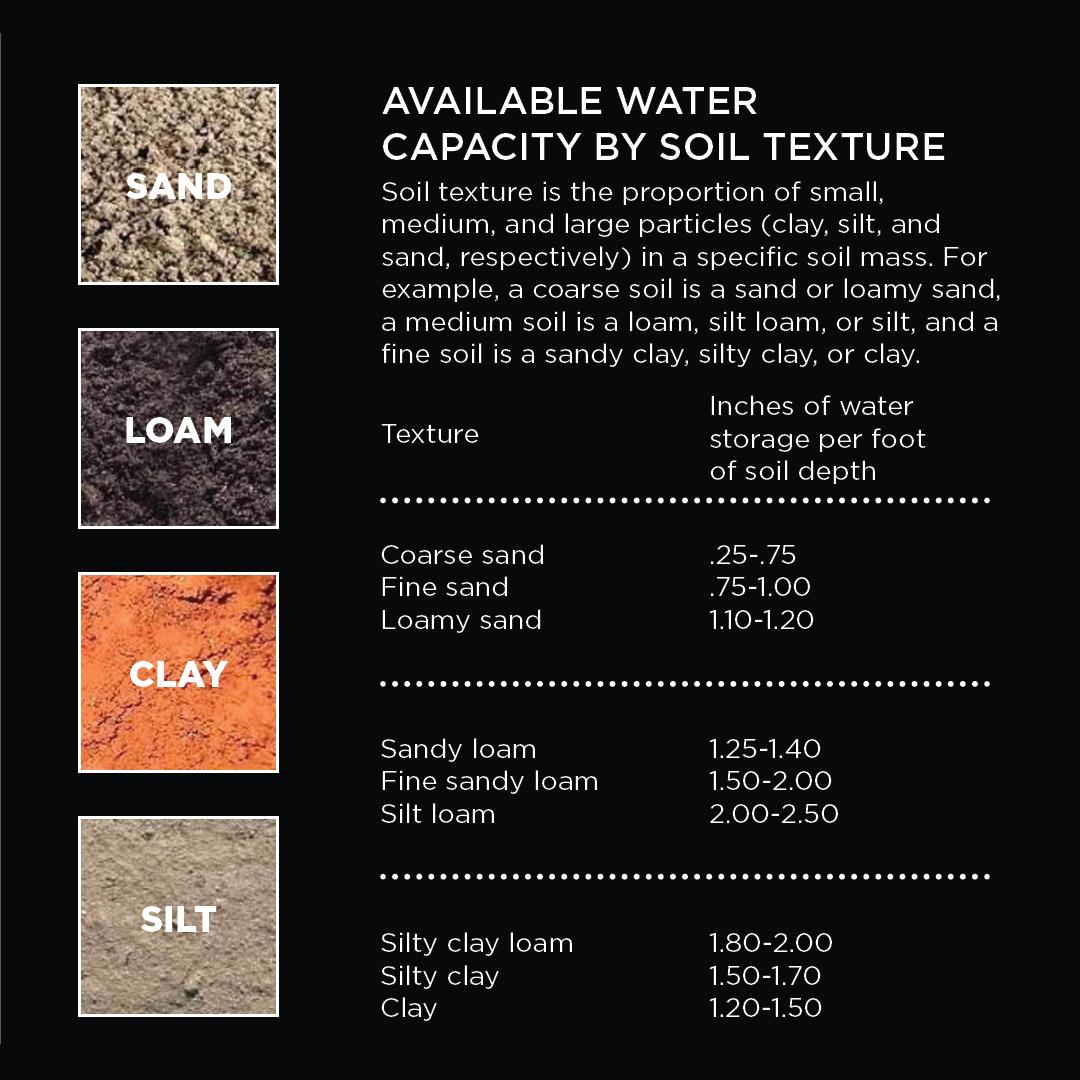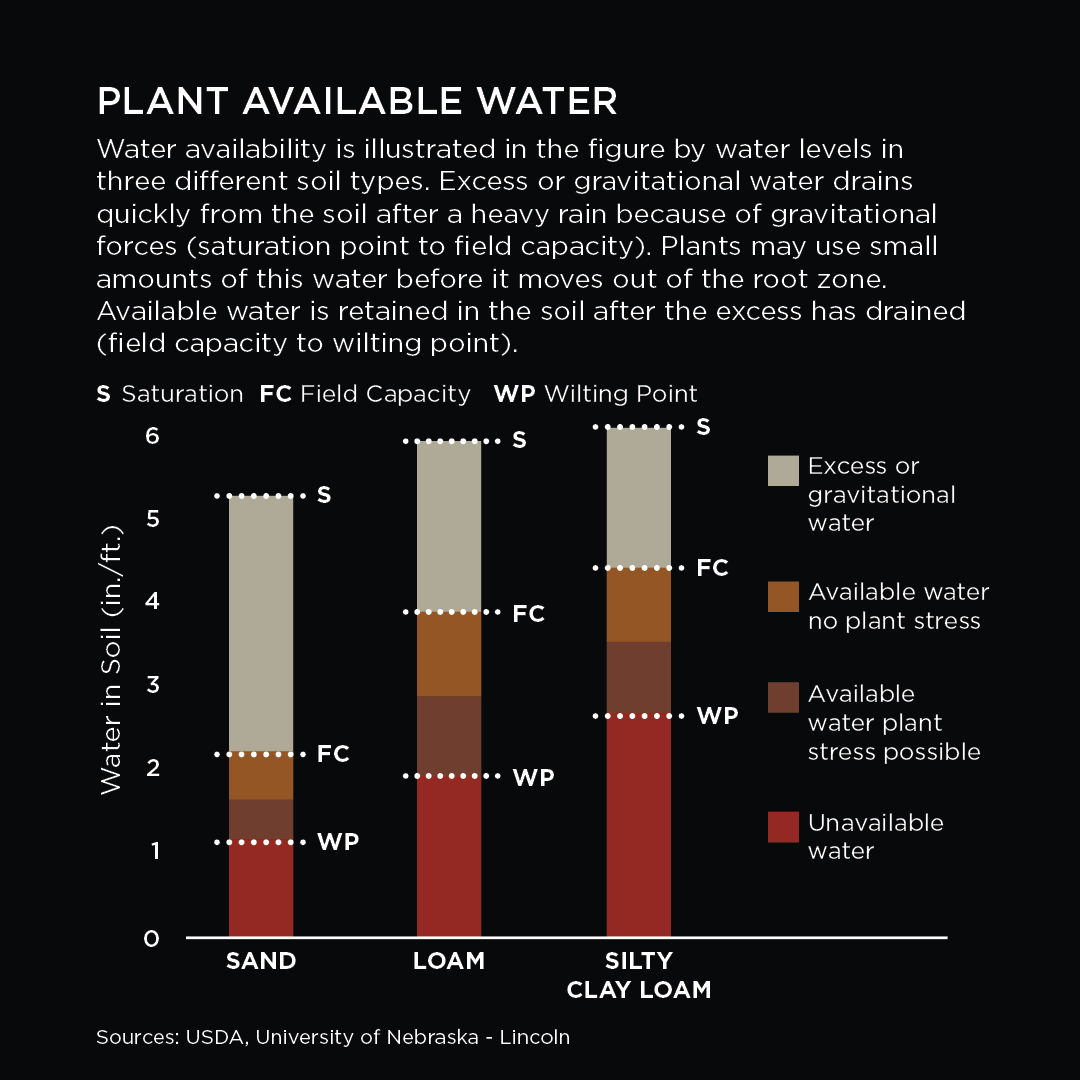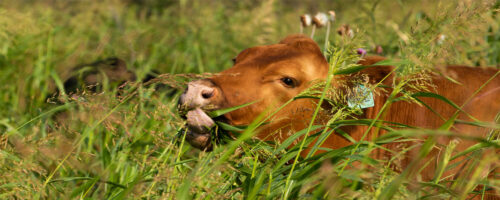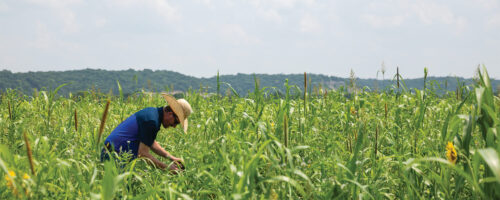Soil and Water Relationships
By understanding a little about the soil's physical properties and its relationship to soil moisture, you can make better soil-management decisions.

Soil moisture limits forage production potential the most in semiarid regions. Estimated water use efficiency for irrigated and dry-land crop production systems is 50 percent, and available soil water has a significant impact on management decisions producers make throughout the year. Soil moisture available for plant growth makes up approximately 0.01 percent of the world’s stored water.
Soil texture and structure greatly influence water infiltration, permeability, and water-holding capacity.
What are the Key Components of Soil Texture?
Soil texture refers to the composition of the soil in terms of the proportion of small, medium, and large particles (clay, silt, and sand, respectively) in a specific soil mass. For example, a coarse soil is a sand or loamy sand, a medium soil is a loam, silt loam, or silt, and a fine soil is a sandy clay, silty clay, or clay.
Soil structure refers to the arrangement of soil particles (sand, silt, and clay) into stable units called aggregates, which give soil its structure. Aggregates can be loose and friable, or they can form distinct, uniform patterns. For example, granular structure is loose and friable, blocky structure is six-sided and can have angled or rounded sides, and platelike structure is layered and may indicate compaction problems.
Soil porosity refers to the space between soil particles, which consists of various amounts of water and air. Porosity depends on both soil texture and structure. For example, a fine soil has smaller but more numerous pores than a coarse soil. A coarse soil has bigger particles than a fine soil, but it has less porosity, or overall pore space. Water can be held tighter in small pores than in large ones, so fine soils can hold more water than coarse soils.
Rainfall Simulator
Jim Johnson, a senior soils and crops consultant at Noble Research Institute, walks us through a rainfall simulation experiment.
How does Water Infiltrate Soil?
Water infiltration is the movement of water from the soil surface into the soil profile. Soil texture, soil structure, and slope have the largest impact on infiltration rate. Water moves by gravity into the open pore spaces in the soil, and the size of the soil particles and their spacing determines how much water can flow in. Wide pore spacing at the soil surface increases the rate of water infiltration, so coarse soils have a higher infiltration rate than fine soils.
Permeability refers to the movement of air and water through the soil, which is important because it affects the supply of root-zone air, moisture, and nutrients available for plant uptake. A soil’s permeability is determined by the relative rate of moisture and air movement through the most restrictive layer within the upper 40 inches of the effective root zone.
Water and air rapidly permeate coarse soils with granular subsoils, which tend to be loose when moist and don’t restrict water or air movement. Slow permeability is characteristic of a moderately fine subsoil with angular to subangular blocky structure. It is firm when moist and hard when dry.
What Influences Soil’s Water-Holding Capacity?
Water-holding capacity is controlled primarily by soil texture and organic matter. Soils with smaller particles (silt and clay) have a larger surface area than those with larger sand particles, and a large surface area allows a soil to hold more water. In other words, a soil with a high percentage of silt and clay particles, which describes fine soil, has a higher water-holding capacity.
The table illustrates water-holding-capacity differences as influenced by texture. Organic matter percentage also influences water-holding capacity. As the percentage increases, the water-holding capacity increases because of the affinity organic matter has for water.

Water availability is illustrated in the figure by water levels in three different soil types. Excess or gravitational water drains quickly from the soil after a heavy rain because of gravitational forces (saturation point to field capacity). Plants may use small amounts of this water before it moves out of the root zone.
Available water is retained in the soil after the excess has drained (field capacity to wilting point). This water is the most important for crop or forage production. Plants can use approximately 50 percent of it without exhibiting stress, but if less than 50 percent is available, drought stress can result. Unavailable water is soil moisture that is held so tightly by the soil that it cannot be extracted by the plant. Water remains in the soil even below plants’ wilting point.

One can see from the table that soil texture greatly influences water availability. The sandy soil can quickly be recharged with soil moisture but is unable to hold as much water as the soils with heavier textures. As texture becomes heavier, the wilting point increases because fine soils with narrow pore spacing hold water more tightly than soils with wide pore spacing.
Soil is a valuable resource that supports plant life, and water is an essential component of this system. Management decisions concerning types of crops to plant, plant populations, irrigation scheduling, and the amount of nitrogen fertilizer to apply depend on the amount of moisture that is available to the crop throughout the growing season. By understanding some physical characteristics of the soil, you can better define the strengths and weaknesses of different soil types.
The table and figures were originally published by the Institute of Agriculture and Natural Resources at the University of Nebraska – Lincoln.


Comment
Leave a Reply
2 comment on: "Soil and Water Relationships""


Ipinmoroti Rotimi
June 13, 2023Contents useful for my research work.
Amber
September 2, 2023Can you share whether you used any herbicide sprays for the no-till treatment? I’m wondering about the impact of chemical disturbance as well as physical. Thanks!